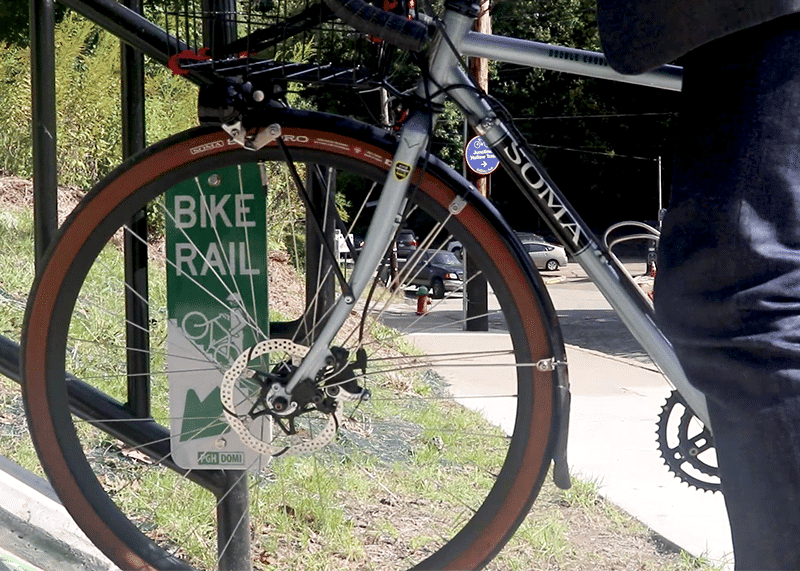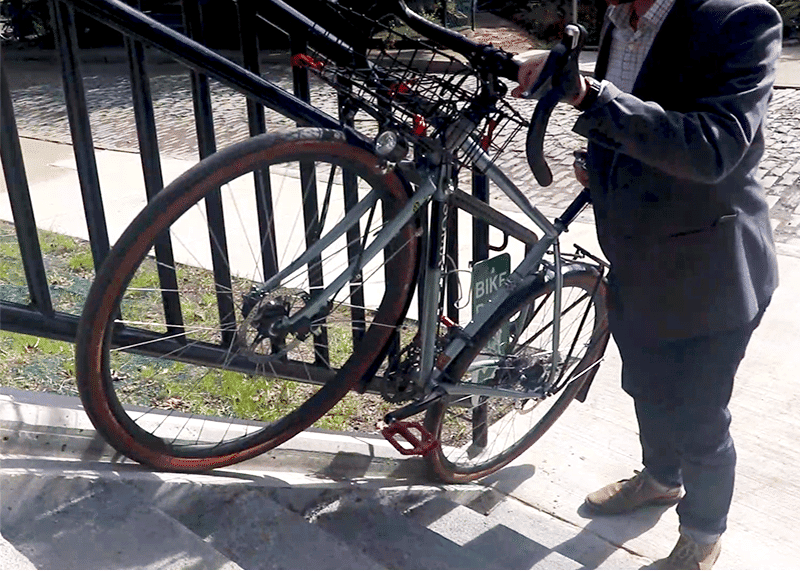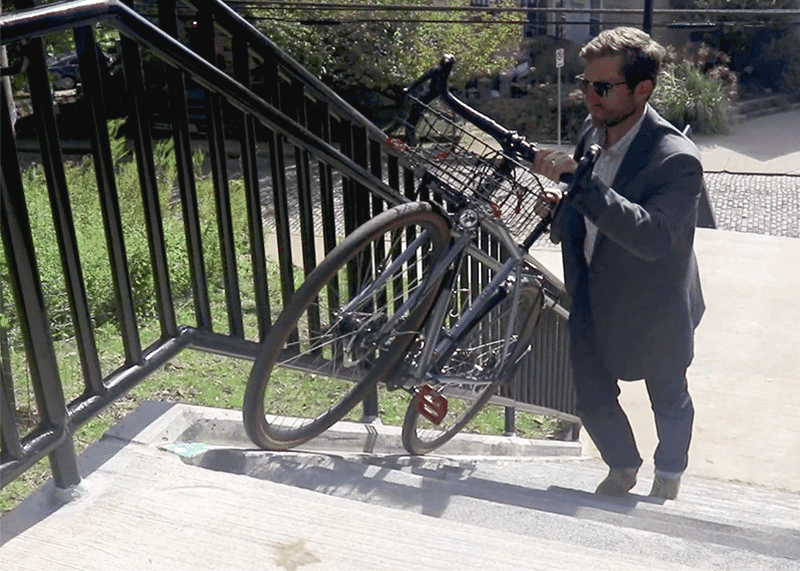It’s time to get familiar with runnels
With more than 800 staircases, Pittsburgh has more city steps than any other city in the country. 60 out of our 90 neighborhoods feature at least one set of municipal steps. Some steps even have a channel for bike tires, called a “runnel”! Next time you see one, here’s what to do.
4 Steps to Properly Use a Runnel:

1. Approach the stairs
First, dismount your bicycle and approach the stairs. Identify the runnel and the path it takes before you go any further. Runnels have a few different designs, but, most times, they will be on the right side of the steps.

2. Grip the saddle and handlebars
Before you start scaling the stairs, be sure to securely grip the saddle and handlebars on your bike. Getting a strong grip on the saddle and handlebars is crucial to getting up the steps safely. If you don’t, you run the risk of falling while climbing.

3. Insert wheels into runnel
Insert your front wheel and align the rest of your bike with the runnel. It’s important that both wheels are correctly lined up in the runnel. If not, it may be difficult to balance your bicycle while climbing the stairs.

4. Walk up the stairs
Walk up the stairs with a hand on your saddle, a hand on your handlebars, and both wheels in the runnel. Some runnels may be close to the railing, so you may have to angle your bike away from the railing in order to get up easier.
Steps provide access between neighborhoods so that people can get around more directly. With a channel for bike tires, steps that include a runnel encourages people in the community to ride their bicycle. Share these tips with a friend, and help them get around town on two wheels!
Sign up for Bike Pittsburgh’s newsletter, The Messenger, to get the latest news on events, bike and pedestrian infrastructure, and fun, delivered straight to your inbox. Twice monthly emails, no spam.


4 Comments
And if you want to go down the stairs? Would be nice to add those instructions as well.
I just tried to use this runnel, and while I love concept behind it, as a landscape architect, I must admit that it is a poor design. It requires you to hold your bike at an extreme angle, which is challenging for me, an able-bodied 30-year-old, let alone some one with physical limitations. It also does not allow for the wheel to nest in the runnel, so it requires you to steer along a very narrow ledge of concrete, which is incredible challenging when holding your bike sideways. Considering that the intention of these runnels is to provide an easier alternative to carrying your bike, it unfortunately fails to achieve that goal. As I said earlier, I am a professional landscape architect and I would love to collaborate with bike Pittsburgh to identify and develop better standard designs for bike infrastructure including bike runnels. If you are interested, I could arrange a collaboration with the American Society of Landscape Architects here in Pittsburgh.
I would like to reiterate how much I appreciate you work, and a failed design is merely a step towards a great design.
These are really clear instructions, thank you for making the video and the texts for the steps!! It’s great for Pittsburg steps, and for myself I find the runnels very helpful. This pages video etc helped my family to decide to get runnels for my mom’s house so she can safely take her bike (that she stores inside) up stairs to get it outside. (When any of us visit we do that for her, but she’s elderly and bikes alone often, and we all fear for her safety bringing the bike up stairs.) All of us viewed the video including Mom, and we’re looking forward to her being safer whenever she heads out for a ride. In case anyone else is interested in doing the same, we found thin wheelchair ramps (designed for one for each wheel of the wheelchair) with a pair of telescoping ramps for $80 on Amazon.
Oops it cost more ($126)
https://www.amazon.com/gp/aw/d/B07GB9RWTM#Ask
Hoping this will work for her home runnel needs!